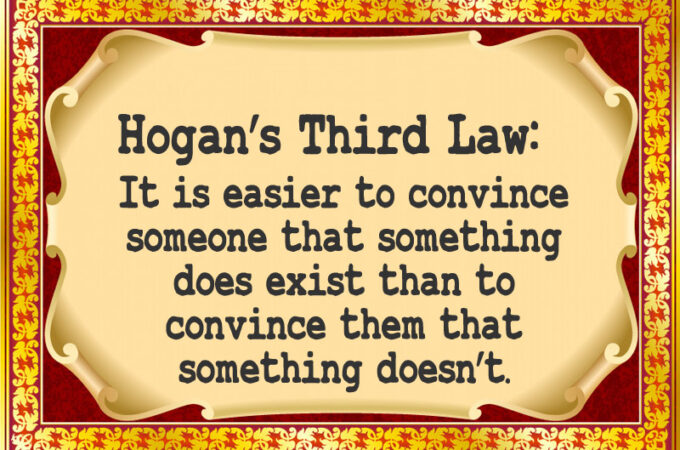We are being asked to believe increasingly crazy things. And, it’s becoming increasingly difficult to determine what’s true and what isn’t.
It used to be that there were limited tools available for communication. You could say something, write something or draw a picture of something. Hearing something is less powerful than reading something and reading something is less powerful than seeing something. The more senses that are involved with an observation, the more likely you are to trust your observation.
Today, technology has given us many more tools. There is an abundance of free software available that will allow you to manipulate audio, text and video. Worse yet, with the advent of synthetic media, artificial intelligence is being used to fabricate things that have absolutely no basis in fact. The more immersive the experience, the more likely someone is to believe it’s real.
People also have a tendency to want to believe certain things. If you already have a bias toward what someone wants you to believe, it’s even easier to trick you.
If you see a video of President Trump calling white supremacists “fine people”, and you already hate the President, then you’re more likely to believe what you’ve been told. In reality, his comments were, creatively edited, taken out of context and he really didn’t say what they claimed he did. But that doesn’t matter, because you’ve already seen it.
So now you’ve got it stuck in your head that he admires white supremacists, and that President Trump is a racist. And that reinforces your hate for him. Once you see something, you can’t unsee it. That bell can’t be unrung. The image will be stuck in your head. And, that mental image can affect how you perceive things in the future.
What if you want people to believe that something didn’t happen? Let’s use the example of the President allegedly calling deceased members of the military “suckers and losers”. In this case, the accusation was made only by an “anonymous source” and reported by a news outlet with an obvious bias against the President. But, people believed it anyway because that’s what they already wanted to believe.
Here’s the thing, it is nearly impossible for the President to get those folks to believe that he didn’t say it. Even though numerous people have stated he didn’t say those words, a lot of other people are going to keep believing that he did.
How do you prove that something never happened? As the old saying goes, “an absence of evidence is not evidence of absence”. It is very difficult to believe something you can’t see, and in most cases, you can’t see someone not saying or doing something.
Getting someone to believe something is true, especially if they want to believe it, is remarkably easy. Because the majority of Americans are surprisingly gullible. Getting people to believe that something is false, is remarkably difficult, for exactly the same reason.
And that brings me to my third law.
Hogan’s Third Law:
It is easier to convince someone that something does exist than to convince them that something doesn’t.
Here’s a link to Hogan’s First Law and Hogan’s Second Law


